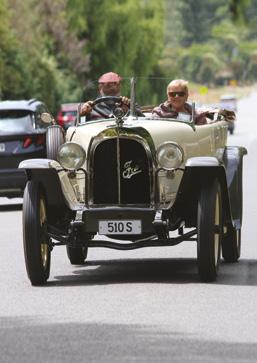
5 minute read
CLASSIC JAPANESE SPORTS COUPE
What actually is a classic car?
There are varied dictionary definitions of the word “classic” but I like this one: “A classic is an outstanding example of a particular style; something of lasting worth or with a timeless quality; of the first or highest quality, class, or rank – something that exemplifies its class.”
It’s very tempting to write about the Subaru Impreza 22B, the Holy Grail of Japan’s classic high-performance cars or the legendary Nissan Skyline GT-R R34, because these two cars are classics in the basic sense of the term “classic” as defined above. More importantly, they are classics because they’ve earned the right to be called that. However, the Vintage Car Club definition of “classic” is a car at least 30 years old and therefore I shall confine (and restrain) myself to writing about this type of classic!
If I were to attempt to write about the history of cars, this little article wouldn’t be enough to talk about the Japanese car industry’s impact in shaping that history. From humble beginnings to global domination, Japan’s car scene has given so much to the auto world, which includes some of the most iconic car models ever made. Classic Japanese cars have gained popularity in recent years as prime collectibles.
A contender for most desirable Japanese car, the Datsun 240Z is a quintessential 70s icon. It arrived in 1970 at a time when safety regulations effectively placed domestic performance cars in a state of flux. The 240Z arrived like manna from heaven and stood out from the crowd with a drop-dead sexy design reminiscent of the exotic European cars of that era. From the Porsche headlights to the Jaguar body and the Aston Martin profile, the 240Z was an affordable performance car that looked more upscale than it actually was.
The 1980s were definitely a roller coaster when it came to good and bad cars, but most of the cars that came out of Japan in that decade, particularly sports and performance-oriented models were truly great. Nearly all Japanese cars from any decade are excellent, but the 1980s were among the very best years for Japanese cars, and particularly for performance models.
Mazda gained millions of extra fans worldwide thanks to the RX-7. The RX-7 debuted in 1978 and became Mazda’s first massproduced sports car. It eventually became the best-selling rotary engine car in history. The distinctive howling of the RX-7 twinrotor engine reverberated on race tracks in Europe and beyond from the start of production. The RX-7 won the British Saloon Car Championship in the 1600cc–2300cc Class in 1980 and 1981 and demonstrated its reliability by winning the Spa 24 Hours, also in 1981.
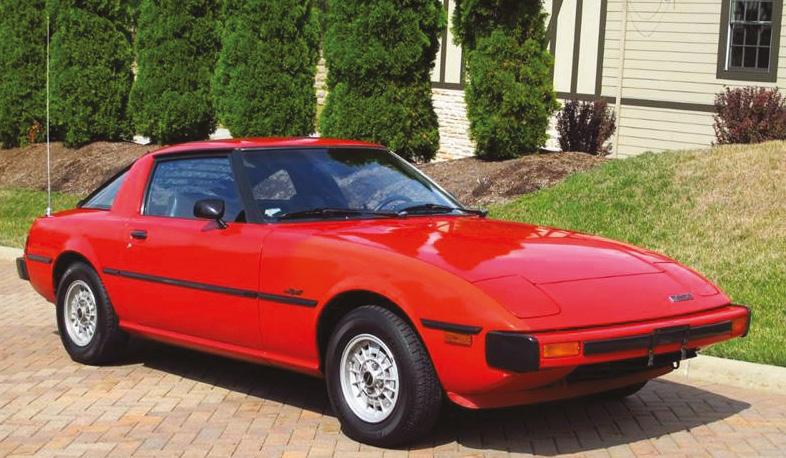
1985 Toyota Celica Specifications
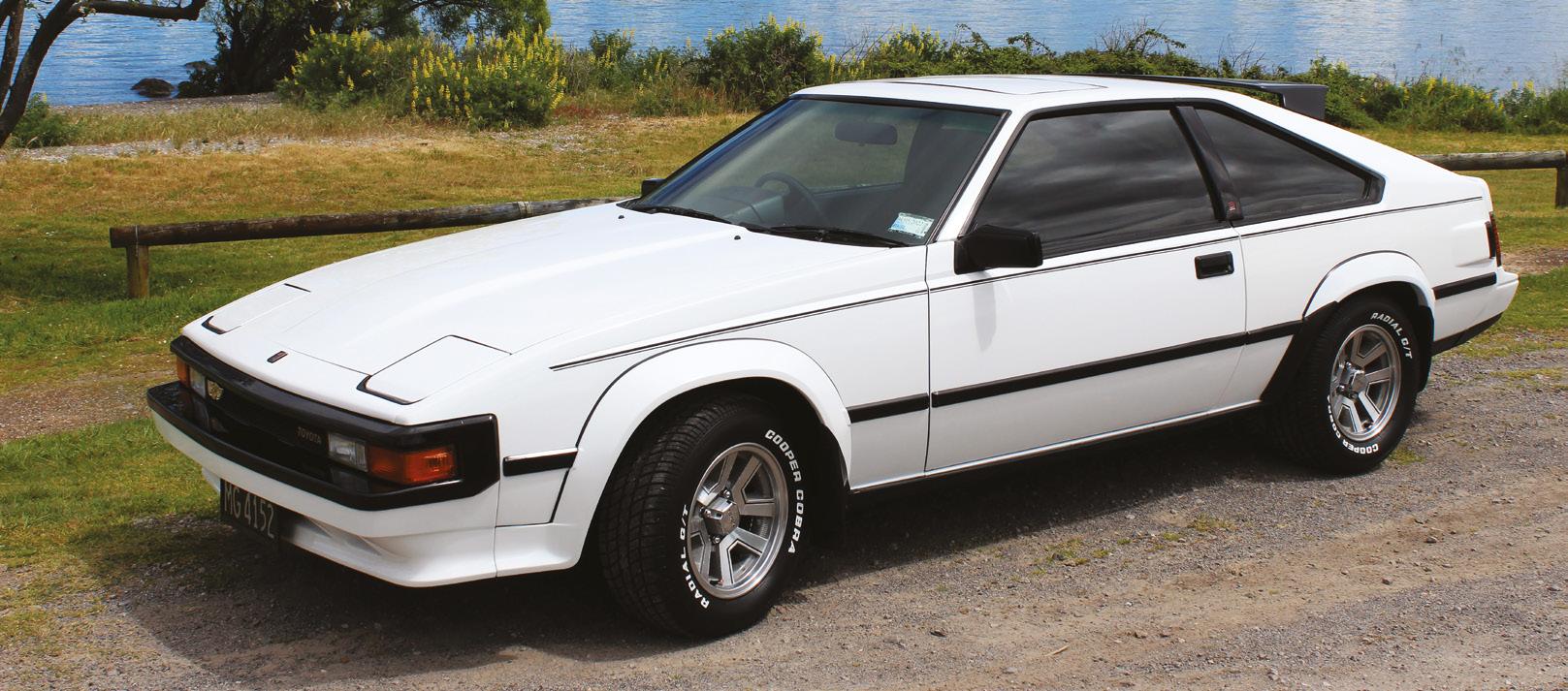
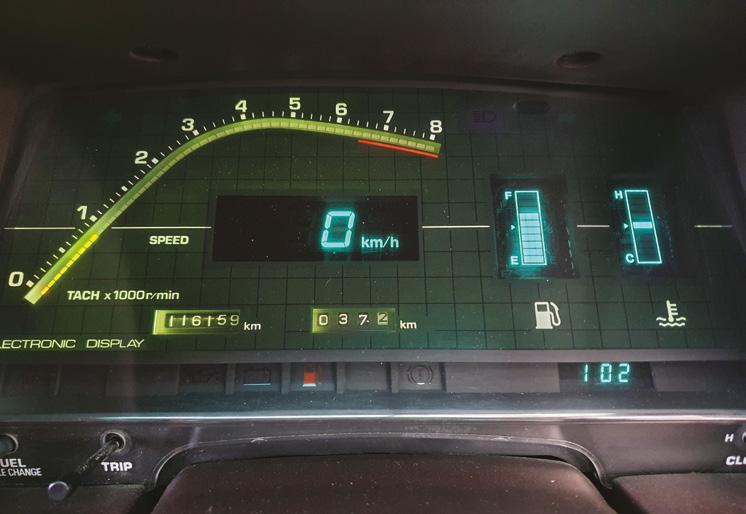
Engine 5M-GE DOHC 2.8 litre straight six giving 178 hp 0 to 60 approximately 8.4 seconds
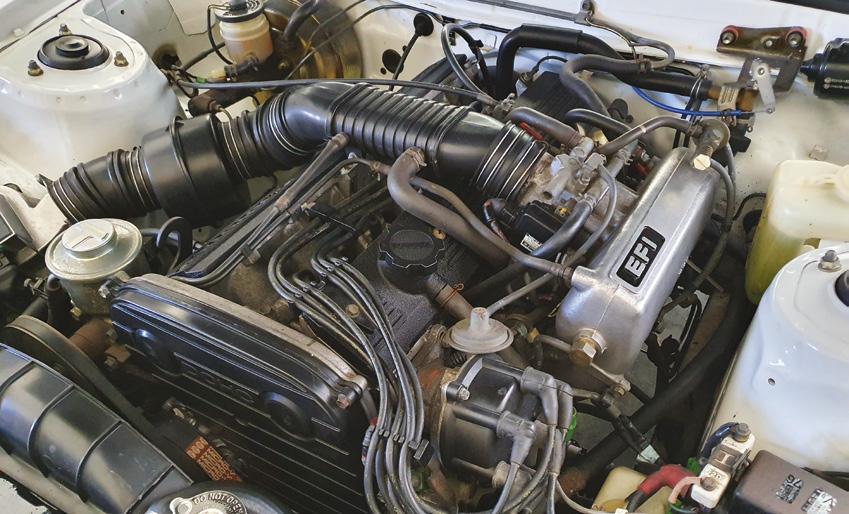
Gearbox 4-speed automatic A43DE gearbox with overdrive
Powertrain Front engine, rear-wheel drive, 2759cc (168.4 cu in) DOHC 5M-GE 133 kW (178hp) 212lb ft (287 Nm) of torque
Brakes Disc brakes all round
Body 3-door lift back (4 seats), wide body sports coupé, pop up headlights, high mounted rear spoiler, sun-roof, fender flares and digital dash
Wheels 14” original factory alloy wheels

One of the few cars in history to deserve its nickname as a “mini Ferrari,” the MR-2 arrived in 1984 and it featured a mid-engine design and two seats hence the name MR2 = Midship Runabout with Two Seats. The MR-2 was a fantastic, affordable sports car that was also incredibly lightweight and there was even a supercharged version of the first-generation AW11 model. Oh and it had pop-up headlights – it doesn’t get more 80s than that.
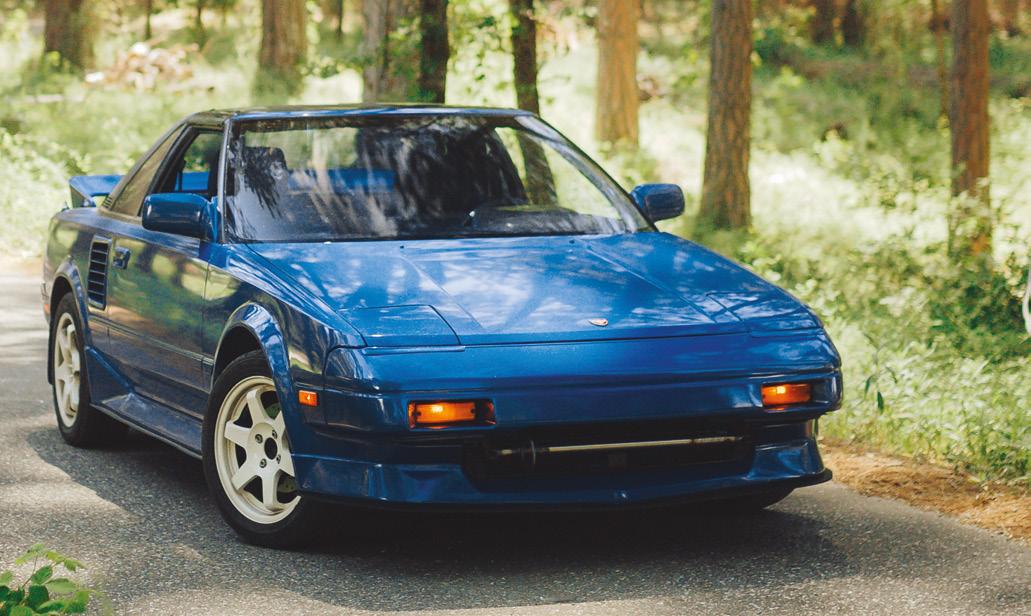
Mitsubishi developed the new GTO as a technically advanced sports coupé to compete with the Mazda RX-7, Nissan 300ZX, Skyline GT-R and the Toyota Supra. They resurrected the GTO name, and the car went on to serve as Mitsubishi’s flagship for the remainder of the decade. However, outside of Japan it was called the Mitsubishi 3000GT because Mitsubishi was concerned that connoisseurs would object to the evocative name from the highly regarded Ferrari 250 GTO and Pontiac GTO being used on a Japanese vehicle.
So, this brings me to our own Japanese sports coupe. We have a 1985 Toyota Celica Supra wide body sports coupe, which is now 38 years old. This car is New Zealand new and on the original plate, having been registered on 9th August 1985. It is eligible for a VIC, which we have acquired and the status is Original, vehicle classification is A2, category is P80V CP, so the VCC has accepted it as an eligible vehicle, but will you purists out there?
Supra – Latin prefix, meaning “above” – “to surpass” or “go beyond.”
Celica – Latin word coelica meaning “heavenly” or “celestial.”
We purchased this second generation (A60) Celica Supra in August 2021 from a local collector who has a varied selection of interesting and classic cars. When we first saw this lovely car, it was under a custom made full cover. The cover was lifted away to reveal this pure white beauty in all its glory. We just had to have this car so we paid for it and picked it up the next day.
After spending quite a bit of time just gazing at it and drinking a few cups of tea, we got down to sprucing up the interior. The dash is a typical “quality” plastic Japanese dash of the era and is in remarkably good condition. After lots of hard hand polishing and a little play with the electric polisher on the paintwork, it looked as good as new. The wheels came off for a clean, even the inside of the rims. The engine bay is a typically Japanese mass of engine, wires and air intake pipework.
We bought any parts we needed from the USA, such as rubber bonnet clips, stoppers, and bits of trim just to finish the job. The pop up headlights were adjusted, the aerial fixed and we re-fitted some of the exterior side trims. Altogether, this took hours in the garage and more time patiently waiting for the mail to come with the parts from the USA, but we have to admit that we enjoyed this “getting familiar” period.
The MKII Celica Supra was manufactured from 1981 through to 1985/86. It was available with a digital instrument cluster like ours. Overdrive was standard on automatic versions also like ours. The name separated into two distinct models from 1986, the MKIII was then known as the Supra and the Celica name was used on a completely different model range. There have been five generations of the Toyota Supra model now dating from 1979 through to 2022. That is 43 years of just one model of Japanese sports car.

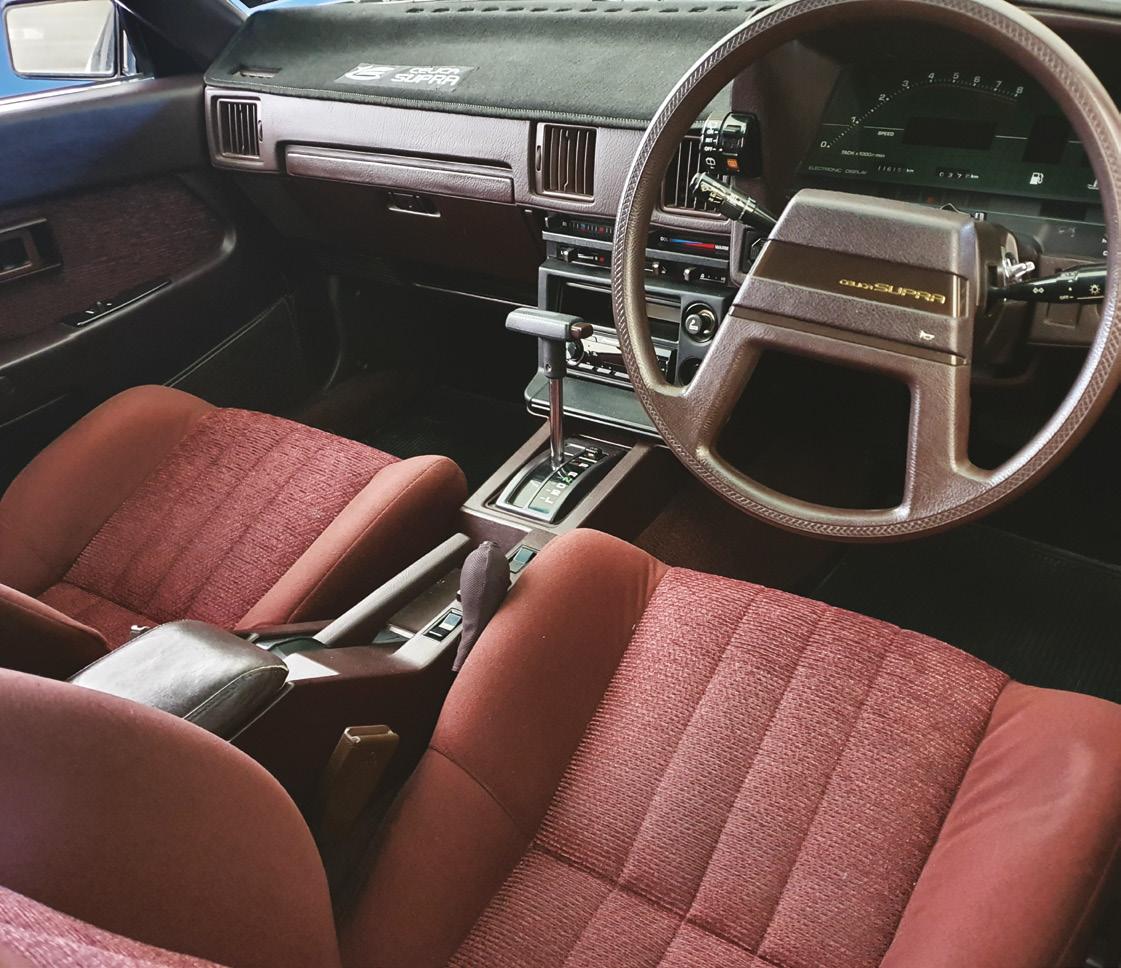
Our Celica Supra gets a lot of attention, particularly from the younger generation, at a VCC event or in town and even when it is visible from the road when the garage door is open. We’ve had kids walking home from school ask to see the Supra and people have parked outside and wandered over to have a look and a chat. We think this is because you just don’t see them around anymore.
Our Celica Supra is a pleasure to drive, a complete show pony and a popular, but rare classic car.
So, now back to the original question, is there such a thing as a classic Japanese sports coupé? We definitely think so, but what do you think?
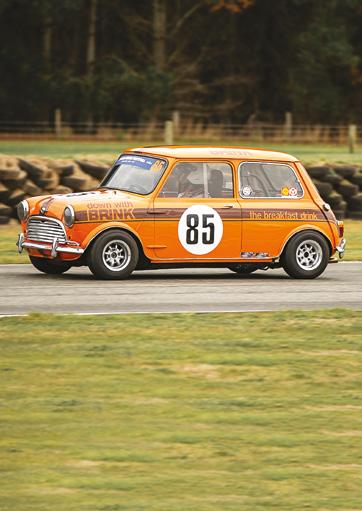
Fiona Holliday

I have been a member, with my husband, of the Taupo Branch for about three years. My interests include some voluntary work with the SPCA, lots of reading and now writing things for the Taupo Torque monthly branch magazine and for Beaded Wheels Within Taupo Branch I am librarian, committee member and part of the events team. I’m real car enthusiast and especially love old sports cars. We have a 1978 MGB GT and also a 1985 Toyota Celica Supra, both of which we take to shows and on club runs (but only if it’s not raining).
How to subscribe
